|
|
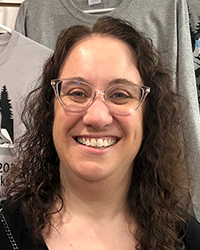 Jen Jen
|
 |
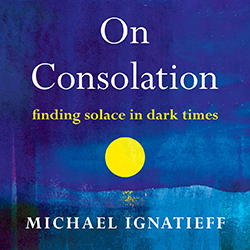
|
|
On Consolation
Michael Ignatieff
When I was a student at Bemidji State University. I had to take a required Philosophy class. I really didn’t know what to expect, but it turned out to be a great class. It was loaded with history, of course, and my professor was a terrific lecturer.
Listening to On Consolation reminded me of being in that Philosophy class. Ignatieff, an agnostic, did a deep dive into what has consoled (or failed to console) humans throughout history. Each essay is focused on a particular figure, starting with Job (yes, biblical Job) to more contemporary figures, such as Primo Levi. The audio book is narrated by the author, who has a soothing, easy-to-listen-to voice. I found myself reminded of a variety of people I love as I listened – ie: Oooh! Dad would love to read this one about Beethoven consoling a widow by showing up at her home, announcing, “Now we will speak in the language of music” and sitting down to play the piano.
It’s one of those books that can be read all at once, or you can take your time, savoring one essay at a time. I highly recommend it! The author confesses right off that the book is filled with the histories of figures of European descent. If I’m lucky, either he or another author will take up the reins and write more books on the topic tackling other cultures/traditions.

|
| |
|
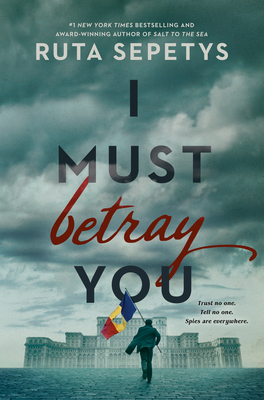 |
|
I Must Betray You
Ruta Septeys
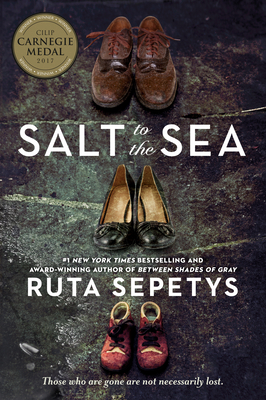 I was thrilled when the Beagle Women’s book group chose to read I Must Betray You for our August discussion. I’m a big fan of an earlier work of this author, Salt to the Sea. I was thrilled when the Beagle Women’s book group chose to read I Must Betray You for our August discussion. I’m a big fan of an earlier work of this author, Salt to the Sea.
Sepetys writes historical fiction about lesser-known bits of history. The protagonists are young people, usually teens, and the books are categorized as “young adult.” Don’t let the YA label scare you off, these are fine works! In I Must Betray You, 17-year-old Cristian lives in communist Romania in 1989. The governments in neighboring communist countries are falling, but not in Romania. Strict rules paralyze its citizens. For example, it’s illegal to talk to a foreigner and Romanians must stand in line for hours for very little food. Everyone fears informers. Cristian is lured into becoming an informer in exchange for the promise of medicine for his progressive grandfather, suffering from leukemia. I mostly listened to this book on libro.fmThe narrator, Edoardo Ballerini, is superb. This is a great book for discussion—from the historical bits to themes of trust and family and friends. Fair warning, it’s not graphic, but the book does include some torture.
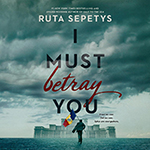

|
| |
|
 |
|
The Echo Maker
Richard Powers
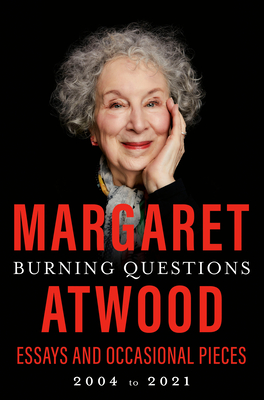 Some time ago, I listened to Margaret Atwood’s latest book, Burning Questions. Some time ago, I listened to Margaret Atwood’s latest book, Burning Questions.
It’s a collection of occasional pieces: essays, book reviews, and speeches. One of the book reviews included was The Echo Maker by Richard Powers, the now well-known author of The Overstory.
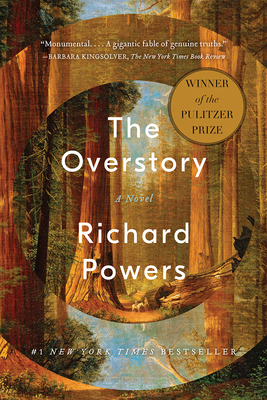
Atwood’s review was so compelling, I ordered in a copy of The Echo Maker. The novel is a story about a young man, Mark, who has a car accident late at night on a road in Nebraska. He survives the accident and with therapy regains his ability to speak and walk. Curiously, he suffers a rare disorder called Capgras Syndrome, in which a person thinks that someone close to him/her is an imposter. In Mark’s case, he’s sure that his sister Karen is a fake, which is devastating to Karen. Other threads in the novel include the plight of the sandhill cranes that migrate through Nebraska every year, the famous neuroscientist who weighs in on Mark’s case, the family history of Mark and Karen, Karen’s choices in partners (including one who used to be Mark’s best friend), and most mysterious of all, a note that was found at Mark’s bedside after the accident. The characters are complex and believable (perhaps in part because they are either flawed or oh-so-flawed). I spent much of my vacation shamelessly reading this. It’s the best novel I’ve read this year. If you don’t take my word for how amazing this book is, take Atwood’s from The New York Review of Books: “A grand novel—grand in its reach, grand in its themes, grand in its patterning… If Powers were an American writer of the nineteenth century…he'd probably be the Herman Melville of Moby-Dick. His picture is that big.
|
|
 Sally Sally |
|
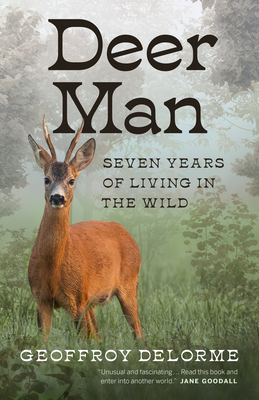
|
 |
Deer Man
Geoffroy Delorme
One morning this spring, I went out to get the newspaper and saw a newborn fawn on my lawn. It was about twenty feet from the house, nestled between two oak trees. I watched it while drinking my morning coffee, and it never moved. Several hours later, its mother returned. After a couple wobbly tries, the fawn got to its feet and the mother led it away.
What a gift to see! It was the closest I’ve ever come observing the private life of deer, although they’re frequently in my yard and too often jump in front of my car. And then I read Deer Man. It’s a memoir which reads like a fable, recounting experiences Geoffroy Delorme had living among roe deer in a forest in France for seven years. I learned what it was like to really observe deer closely.
The focus of the book is almost entirely on that experience. We learn very little about Delorme’s personal life, other than he was home schooled after a difficult time at school, and that his relationship with his parents was strained. At the age of nineteen, he entered the forest. He apparently had with him a bag with a billycan, matches, and a camera, as well as three sweaters. He had no tent, no sleeping bag; none of the paraphernalia we might think essential for life in the forest. What he did have was an intense desire to live among the deer and become OF, as opposed to IN the forest.
Gradually, the deer came to accept him in their midst, allowing him to walk behind them. Although Delorme didn’t want to anthropomorphize the deer, he gave them names, recognized personality traits, and ascribed emotions to them. The book is filled with incredible photographs of the deer and their forest home.
Near the end of the book, Delorme slowly decides to re-enter the world of people, hoping to advocate for the deer and the forest.
To read this book is to enter the world of a very singular man, and to see the world of roe deer through his eyes. You may never read another book like this one.
|
| |
|
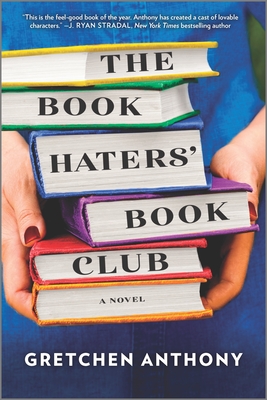
|
|
The Book Haters’ Book Club
Gretchen Anthony
This rollicking novel is set in two of my favorite places—a bookstore and Minneapolis. Elliot, the co-owner of Over the Rainbow Bookshop, has recently died. His co-owner and best friend, Irma, has decided to sell the property to a condo development company.
Irma’s daughters, Bree and Laney, and Elliot’s partner, Thom, are both puzzled and outraged with her decision. Each for their own reasons, the three of them join together to plot to save the bookstore.
Along the way you’ll find book recommendations (Elliot was known for recommending the perfect book for every reader—even self-professed book haters); a cameo appearance by one of the characters in Anthony’s earlier book, Evergreen Tiding from the Baumgartners; humor; and family dynamics run amok.
The book is a feel-good read which is a love letter to booksellers and bookstores.
We’re looking forward to having author Gretchen Anthony in the store on November 26.
Note: both the paperback and hardcover of the book will be released on September 13.
|
| |
|
 |
|
Painting Beyond Walls
David Rhodes
A new novel by David Rhodes is a cause for celebration! After publishing three novels in the early 70’s, a motorcycle accident in 1976 left him paraplegic. His next two novels, Driftless and Jewelweed, were published in 2008 and 2013, respectively, so it’s been a long wait for his newest book, Painting Beyond Walls.
The book is set in the near future. August Helm, a native of Word, Wisconsin has made a life for himself in Chicago. A biochemist, he has a girlfriend he’s crazy about and an interesting job in a lab. Suddenly, everything falls apart. He and his girlfriend break up and, after discovering the director of the lab in a compromising position, he loses his job. Feeling out of options, August packs up his belongings and heads back to his parents’ home in Word.
He reconnects with family and friends (and readers of Driftless and Jewelweed do as well.)
Soon, he has a job as a live-in caretaker in the home of Tom and April Lux. This house is in Forest Gate, a new gated community outside Word. August is drawn back into the lives of people he once knew in Word, and those he meets in Forest Gate.
Rhodes deftly explores the importance of community and connectedness; the human condition, particularly the presence of evil in the world; and how wealth can be used to better the world. And, interestingly in this time when many deny the validity and importance of science in human life, he tackles that issue head on. It’s not too much of a spoiler to say that the problems our world currently faces, such as climate change and overpopulation, find remedy in the world of the book through science. And amazingly, all the elements of the story are connected by the end of the book.
The dialogue can be ponderous, but stick with the book for the complex characters, beautiful descriptions and a view of the future which will challenge your understanding of science and where we are headed as a species. And then, like me, you may want to reread Driftless and Jewelweed to be reminded of the backstory of Painting Beyond Wall.
Welcome back, David Rhodes!
Note: this book will be released September 13
|
| |
 |
 |
 |
|
|

Bob |
|

|
|
Padawan
Kiersten White
Ok, so this has to be good. Even if it doesn’t have a spaceship on the cover, it DOES have a lightsaber and for me that qualifies it as Sci-fi.
Imagine, if you can, a young version of Obi-Wan Kenobi. Somebody that’s indecisive, the butt of jokes, unable to call up the Force, barely a Padawan? Oh, that can’t be him. Well, there he is and he’s looking for some answers. It seems he doesn’t have a good relationship with anyone, including his Jedi Master so he sets off on an adventure to a “lost” planet alone. This is Obi-Wan the student, not a Jedi-Knight much less a Jedi-Master, figuring out how to make things work without getting killed.
A good fun read for all ages.
|
| |
|

Brita
|
|
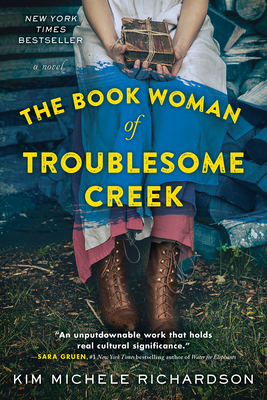 |
|
The Book Woman of Troublesome Creek and
The Book Woman’s Daughter
Kim Michele Richardson
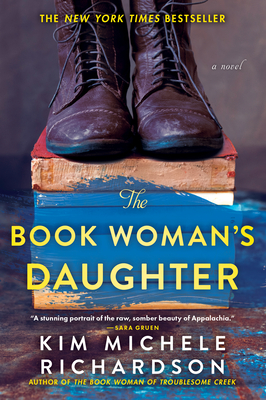 Booklovers everywhere can appreciate the history brought to life by Kim Michele Richardson as she researched and wrote two books; The Book Woman of Troublesome Creek and its sequel, The Book Woman’s Daughter. The books detail the perseverance, grit, and bravery of the women like Cussy Mary Lovett and her daughter, Honey Mary-Angeline Lovett. They served as Kentucky’s Pack Horse Librarians, delivering books and other reading materials by mule and horseback, riding alone, deep into the hills of Kentucky to reach impoverished residents who had no other source of obtaining books. These “Book Women” faced down adversities, from rain and snowstorms on treacherous mountain trails, to cranky mules, to obstinate, sometimes murderous men, on a daily basis as they worked to expand literacy in their communities. They also brought joy and hope to thousands of people. Booklovers everywhere can appreciate the history brought to life by Kim Michele Richardson as she researched and wrote two books; The Book Woman of Troublesome Creek and its sequel, The Book Woman’s Daughter. The books detail the perseverance, grit, and bravery of the women like Cussy Mary Lovett and her daughter, Honey Mary-Angeline Lovett. They served as Kentucky’s Pack Horse Librarians, delivering books and other reading materials by mule and horseback, riding alone, deep into the hills of Kentucky to reach impoverished residents who had no other source of obtaining books. These “Book Women” faced down adversities, from rain and snowstorms on treacherous mountain trails, to cranky mules, to obstinate, sometimes murderous men, on a daily basis as they worked to expand literacy in their communities. They also brought joy and hope to thousands of people.
I hope you also will enjoy and learn from these books.
|
|
| |
|
 |
|
|
|

Cascade
|
 |
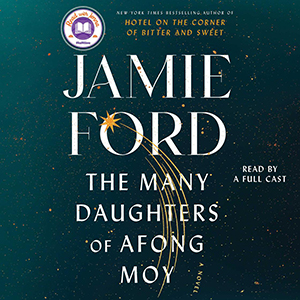 |
 |
The Many Daughters of Afong Moy
Jamie Ford
This sweeping, multi-generational novel references the real-life Afong Moy. She was the first Chinese woman to come to America in the 1800s and was paraded around as a curiosity. In 2045, her descendent, Dorothy, is struggling with mental health issues, a lackluster marriage, and a daughter who is exhibiting strange behaviors and seems to be following in Dorothy’s mentally fraught footsteps. As a last-ditch effort, Dorothy seeks the help of an epigenetic (the study of how your behaviors and environment can cause changes that affect the way your genes express themselves) treatment center and she begins to have recollections of her past ancestors. At first these memories are painful and confusing, but they hold the key to stabilizing Dorothy’s chaotic life and breaking the generational trauma. This book is lyrical and borders on magical realism, but with strong ties to historically accurate incidents that the Moy women experience. I listened to this novel on Libro.fm and each Moy daughter is voiced by a different narrator which makes the different generations especially distinct.

|
| |
|
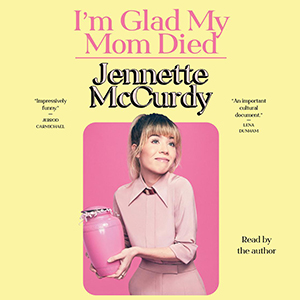 |
|
I’m Glad My Mom Died
Jennette McCurdy
I know, I know… the title makes this sound like a horribly mean book, but I promise it’s not. McCurdy is a former child-star best known for her character Sam in the Nickelodeon show iCarly. Much of this autobiography chronicles just how much abuse and exploitation occurred at the hands of her mother and within the acting industry as a whole. McCurdy was forced to work long days on set, spend hours in acting and dance classes, and deal with her controlling and emotionally abusive mother 24/7. Whenever McCurdy tried to quit, her mother reminded her that the family relied on her income and would try to guilt her into staying with it. Later, as puberty hit and McCurdy’s body began changing, her mother encouraged and taught her how to restrict calories to stay slim and childlike. When McCurdy was in her early 20s, her mother succumbed to cancer and only after her death was McCurdy able to address and heal from her disordered eating and addiction issues. I’m Glad My Mom Died is not an easy read, but the book perfectly captures the issues many child stars are left with after leaving the industry and shows that recovery is possible. Jeanette McCurdy voices the audiobook which I listened to on Libro.fm and I feel that her narration was perfect for such a personal non-fiction work.

|
| |
|
|
|
|
|
|
| |
|
 |
|
|
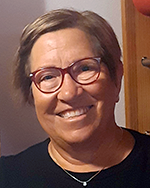
Doni
|
|
 |
|
Less is Lost
Andrew Sean Greer
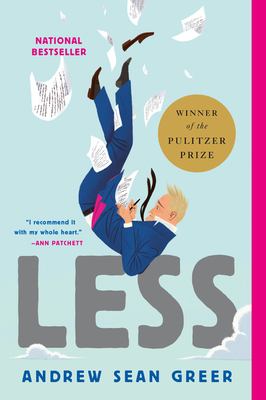 The sequel to Less, 2018 Pulitzer Prize winner, Less is Lost is narrated by Arthur Less’ partner, Freddy Pelu. The death of an erstwhile lover leaves Arthur to discover he owes 10 years in back rent. This financial crisis leads Less, a minor author, to contact his agent, who sends him on a series of events, assignments, and appearances across the country. The sequel to Less, 2018 Pulitzer Prize winner, Less is Lost is narrated by Arthur Less’ partner, Freddy Pelu. The death of an erstwhile lover leaves Arthur to discover he owes 10 years in back rent. This financial crisis leads Less, a minor author, to contact his agent, who sends him on a series of events, assignments, and appearances across the country.
We follow Less as he drives an old author to find his daughter, to the deep South (“They kill queers there, don’t they?”) for a theatrical presentation of one of his stories, and to Dover, Delaware, where he was born and raised. A bit oblivious, Arthur encounters numerous people and experiences that have him contemplating his life and relationships.
This book is funny. Less’ mishaps and revelations are endearing, and Greer’s use of words provide everything from a smile to an outright laugh. Freddie knows his subject well and is tender with his foibles in his narration.
I listened to this book on Libro.fm and this narrator was very good as well.
 |
| |
|
|
|
|
|
| |
|
|
|
|

Gina |
 |


|
 |
Trust
Hernan Diaz
Trust is a book within a book, within a book, within a book…. meta. We get four people telling, in essence, the same story. That story takes place during the boom and bust of the 1920’s–1930’s. As the title Trust suggests, we are talking about money and people who have it. But we are also talking about the many meanings of words, differing perspectives of the same events, who has rights to a story, and who controls the narrative. Each of the books within this novel will bring questions to your mind, especially regarding trust.
This book has a unique structure, accessible yet intelligent writing, and interesting characters. It’s a book that I feel will reveal more upon rereading.

Diaz’s debut novel, In the Distance, was a finalist for the 2018 Pulitzer Prize for fiction. Trust, his second novel has been longlisted for the 2022 Booker Prize. As of writing this, it’s the book I am hoping will win.
|
|
| |
|
|
|
|
|

Hannah
|
|

|
|
Klara and the Sun
Kazuo Ishiguro
This is definitely a dystopian novel, but it isn’t dark. As it opens Klara, an Artificial Friend, is in a shop. She’s hoping to be bought for a lonely child. (If you’re familiar with The Story of Holly and Ivy by Rumer Godden, this is in part an adult version of that book.) We see the world through Klara’s eyes, her wisdom and her misreadings of basic reality. Or is it we who are mistaken? Klara is solar powered, so sees the sun as a generous, intentional benefactor. Perhaps it is.
This book explores the nature of love and the human condition, with an optimistic undertone even as the society it describes is so frightening. It’s quite an accomplishment, pulling that off.
|
| |
|
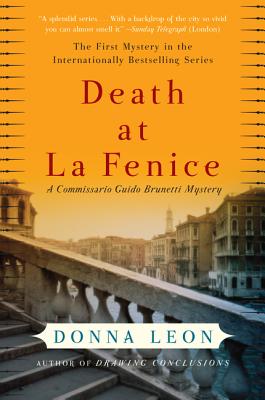
|
|
Death at La Fenice
Donna Leon
I’ve reviewed more than one of the Commissario Guido Brunetti mysteries here, because I love them. The Venice setting, the marvelous characters, and the insights into life in this most rarified city beguile me. I haven’t read them in order like Louise Penny’s books: I didn’t discover them until they had been out for years. But I always keep an eye out for a new one, or one that I missed.
To my astonishment, the very first book in the series has just been republished after 30 years! When the story opens, the world’s greatest conductor is found dead in his dressing room before the third act of the opera he’s conducting. What a joy to get introduced to Brunetti and his world when they were new! Of course, I knew one of the suspects is innocent as the character is alive and well in a subsequent book… |
| |
|
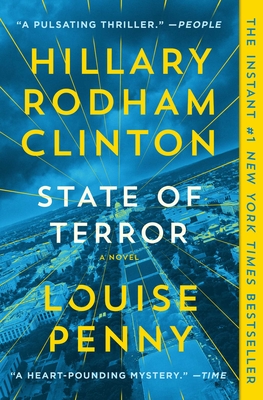 |
|
State of Terror
Hillary Rodham Clinton and Louise Penny
I had my doubts about this book, but really enjoyed reading it. The acknowledgements explain that Clinton and Penny are friends, and you can just feel how much fun they had working together on this book. There’s an incompetent former President Dunn who lives in Florida (although the current President is neither Obama nor Biden). The female Secretary of State actually is based on someone Clinton worked with, but her experience in the job provides a great deal of interesting insights and ambiance. This is a political thriller, but it also celebrates female friendships. The ending is quite cathartic… until the last scary page.
|
|
|
 |
 |
 |
|
|

Lee |
|

|
|
The Ski Jumpers
Peter Geye
Peter Geye is a Minnesota author who has written some excellent novels. (I am thinking, in particular, of his Eide Family trilogy: The Lighthouse Road, Wintering, and Northernmost.)
In The Ski Jumpers, he brings us Jon Bargaard, an author facing Alzheimer’s, whose family history is bound to ski jumping. This history is also one filled with lies and deception that seem to be, more often than not, simply the result of misfortune and difficult choices rather than a lack of love. Jon wishes more than anything to be able to somehow heal the shattered relationship with his brother.
I am not a ski jumper, nor has it ever appealed to me, but the author has done a marvelous job of making me feel each jump and understand the need to jump. I guess that is not so strange, in that he started jumping as a child, was quite skilled, and currently is coaching the sport in Minneapolis. His love for the sport is obvious.
I truly enjoyed reading this book! How much, you ask? I am hoping that my almost-5-year-old granddaughter will give ski jumping a go.
See posting on children being recruited. |
| |
|
 |
|
Fox Creek
William Kent Krueger
This is the author’s 19th book in his Cork O’Connor series. Cork is no longer the sheriff in Aurora, Minnesota, but he works as a private investigator and runs a well-known hamburger joint.
Henry Meloux is a 105-year-old Ojibwe mide (pronounced mid-day: a healer and mystic). He has been a close friend and advisor of Cork for decades. Recently, both Henry and Cork’s son have seen a vision of Henry’s death.
Dolores Morriseau has come to Henry, hoping he can help heal her marriage. With the help of Rainy Bisonette (Cork’s wife and also a healer), the three are working toward that goal when they suddenly take flight into the boundary waters.
Cork and others soon follow as mercenaries pursue Henry and the women, and the mysteries surrounding this chase expand and deepen.
 Followers of this series will find this book to be a great addition. And even if you are a newcomer, you will enjoy this book ... and then probably wonder if you should start reading the first book in the series, Iron Lake. (You should.) Followers of this series will find this book to be a great addition. And even if you are a newcomer, you will enjoy this book ... and then probably wonder if you should start reading the first book in the series, Iron Lake. (You should.)
|
| |
|

|
|
Nightcrawling
Leila Mottley
Nightcrawling is, quite deservedly, a Booker Prize nominee. (And, yes, it was published before the author was 20.)
Seventeen-year-old Kiara and her older brother, Marcus, are barely keeping a roof over their heads and some food (think cereal and peanut butter) on the table. Both have dropped out of high school, and they have been scraping by since their mother went to prison.
Marcus hopes for a huge career in rap and spends his hours in a friend’s marginal home studio. Kiara looks for work, hoping to pay the ever-increasing rent and provide food for herself, her brother, and a 9-year-old neighbor who has been abandoned.
Quite inadvertently, Kiara stumbles into sex work, which drags her into a ring of Oakland police who call on her or other girls frequently for parties and “special events.” When the scandal is revealed, Kiara becomes the star witness.
This is a gritty portrayal of lives that are defined by poverty, bad choices, and few options. |
|
| |
|
| |
|
|
|

Tim
|
|

|
|
The Island of Extraordinary Captives
Simon Parkin
Peter Fleischmann fled Germany in 1938, through the agency of the Kindertransport program. The program was an effort to evacuate as many children (mostly Jewish), out of Germany, to countries deemed safe, Britain being the foremost. At 17, Peter was old enough that he barely qualified, but was able finally to escape to England. There he found himself an exile in a foreign country, with a new language, and few prospects. At the time, thousands of other people who were able also fled the country. Professors, doctors, lawyers, musicians, artists--an entire professional class arrived in Britain. But as Britain entered the war, there developed a deep unease about these migrants and the role (help or hindrance) they would play in the coming conflict. Conservative xenophobia, as it so often does, got the upper hand (examples: Japanese internment here in the U.S.in the early 1940's, and arguably, the recent internment of Central and South American refugees) and Britain established a series of camps on the Isle of Man. Young Peter Fleischmann, found himself interred at Camp Hutchinson, along with dozens and dozens of Europe's most extraordinary Intellectuals. The years he spent there became a sort of sequestered college education. Parkin's book is an account of Peter's education and transformation.
It's a remarkable story!!
|
| |
|
|
|
|
|
Guest Review
by Rachel |
|
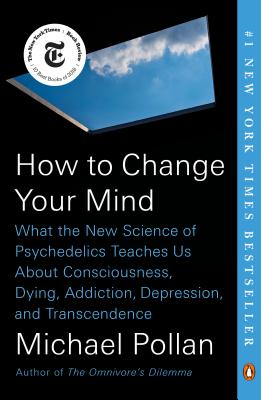
|
|
How to Change Your Mind:
What the New Science of Psychedelics Teaches Us About Consciousness, Dying, Addiction, Depression, and Transcendence Michael Pollan
You may be familiar with Michael Pollan, author of The Omnivore’s Dilemma. A few weeks ago, Cascade, my daughter and favorite bookseller, mentioned another Pollan book, How to Change Your Mind. They conveniently had a copy sitting on their bookcase and Netflix had just released a docuseries featuring the book and author.
This 400-page book contains six chapters, with a prologue that eloquently sets the stage for the upcoming content. I had forgotten Pollan’s mastery of the English language and the breadth of his vocabulary; I find his non-fiction writing style a pleasure to read!
Chapter 1, “A Renaissance” explains that psychedelics have really come full circle. From 1950-1966, psychedelics were being studied and utilized by the US government and the medical community for the treatment of mental illness and addiction. Once psychedelics transitioned in the mid-to-late 60s to become part of the hippie counter-culture movement, the American government banned them. (An interesting side note from chapter 1 is that LSD is not as dangerous as we were taught in high school health class.)
I absolutely loved chapter 2 “Bemushroomed” which was essentially a biography about Paul Stamets, a modern American mycologist, who is world-renowned for both his research and manufacture of all things mushroom-related. Chapter 3, “History,” mentioned Andrew Weil’s role with psychedelics at Harvard and the evolution of Ram Dass from Harvard researcher to spiritual teacher—trivia about well-known figures that really caught my attention.
Chapter 4, “Travelogue,” was by my favorite. It dealt with Pollan’s personal experiences with the three psychedelics he features in the book—LSD, psilocybin, and 5-MeO-DMT (“The Toad” or smoked venom of the Sonoran Desert/Colorado River toad).
In Chapter 5, Pollan explores the neuroscience of psychedelics and the last chapter, “The Trip Treatment.” It focuses on the three primary clinical usages for psychedelics which are easing the mental-emotional component for patients with terminal diseases, addiction, and depression.
Note: this review appeared in a different form in a recent edition of the Park Rapids Enterprise and is used with the permission of the author.
|
|
| |
|
|
Would you like to be a guest reviewer?
Email Sally at sally@beagleandwolf.com |
| |
|
|
|
|
|
— page top —
|
|






 Sally
Sally









 I was thrilled when the Beagle Women’s book group chose to read I Must Betray You for our August discussion. I’m a big fan of an earlier work of this author, Salt to the Sea.
I was thrilled when the Beagle Women’s book group chose to read I Must Betray You for our August discussion. I’m a big fan of an earlier work of this author, Salt to the Sea. 






















